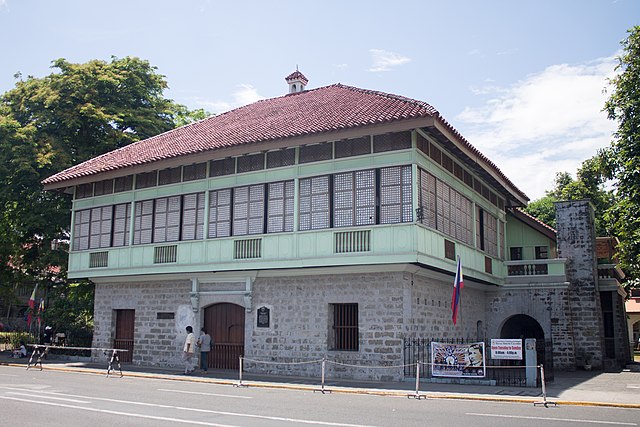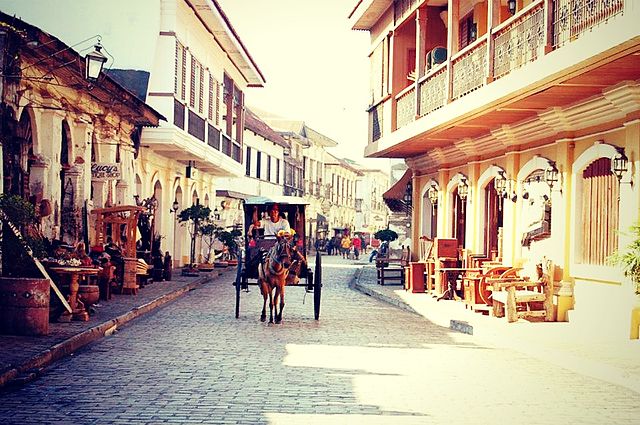Ancestral houses of the Philippines
Ancestral houses of the Philippines or Heritage Houses are homes owned and preserved by the same family for several generations as part of the Filipino family culture. It corresponds to long tradition by Filipino people of giving reverence for ancestors and elders. Houses could be a simple house to a mansion. The most common ones are the "Bahay na Bato". Some houses of prominent families had become points of interest or museums in their community because of its cultural, architectural or historical significance. These houses that are deemed of significant importance to the Filipino culture are declared Heritage House by the National Historical Commission of the Philippines (NHCP), previously known as the National Historical Institute (NHI) of the Philippines. Preservation is of utmost importance as some ancestral houses have come into danger due to business people who buy old houses in the provinces, dismantle them then sell the parts as ancestral building materials for homeowners wishing to have the ancestral ambiance on their houses. These ancestral houses provide the current generation a look back of the country's colonial past through these old houses.

Beaux-Arts style mansion Lopez ancestral house in Jaro, Iloilo City
The ancestral house of Emilio Aguinaldo, declared a National Shrine in 1964
Guagua mansion
Bahay na bato ancestral houses being used for commercial purposes.
Bahay na bato, also known in Cebuano as balay na bato or balay nga bato and in Spanish as casa Filipino, is a type of building originating during the Spanish colonial period of the Philippines. It is an updated version of the traditional bahay kubo of the Christianized lowlanders, known for its use of masonry in its construction, using stone and brick materials and later synthetic concrete, rather than just full organic materials of the former style. Its design has evolved throughout the ages, but still maintains the bahay kubo's architectural principle, which is adapted to the tropical climate, stormy season, and earthquake-prone environment of the whole archipelago of the Philippines, and fuses it with the influence of Spanish colonizers and Chinese traders. It is one of the many architecture throughout the Spanish Empire known as Arquitectura mestiza. The style is a hybrid of Austronesian, Spanish, and Chinese; and later, with early 20th-century American architecture, supporting the fact that the Philippines is a result of these cultures mixing. Its most common appearance features an elevated, overhanging wooden upper story standing on wooden posts in a rectangular arrangement as a foundation. The posts are placed behind Spanish-style solid stone blocks or bricks, giving the impression of a first floor. Still, the ground level contains storage rooms, cellars, shops, or other business-related functions. The second floor is the elevated residential apartment, as it is with the bahay kubo. The roof materials are either tiled or thatched with nipa, sago palm, or cogon, with later 19th-century designs featuring galvanization. Roof styles are traditionally high pitched and include the gable roof, hip roof, East Asian hip roof, and the simpler East Asian hip-and-gable roof. Horses for carriages are housed in stables called caballerizas.

The Rizal Shrine in Calamba is an example of bahay na bato.
An example of bahay na bato Philippine architecture
House in Luneta with thatch roof
Vega Ancestral House Spanish colonial-era nipa mansion, a "1st transition bahay na bato style" house in Poblacion, Balingasag, Misamis Oriental, Mindanao, known for its sculpted wooden Atlases.








